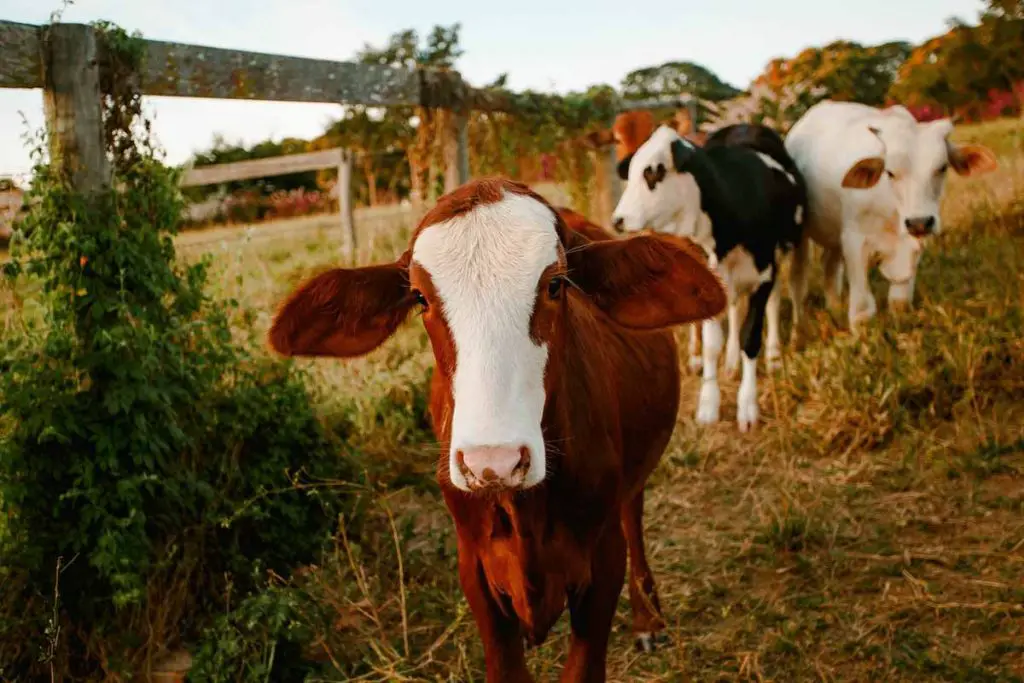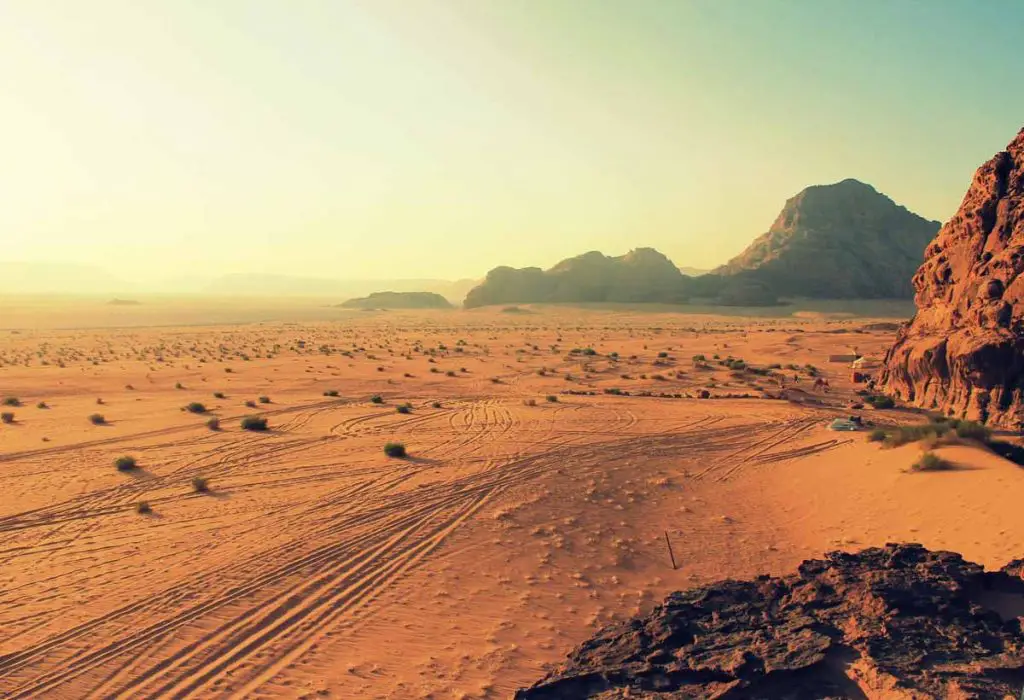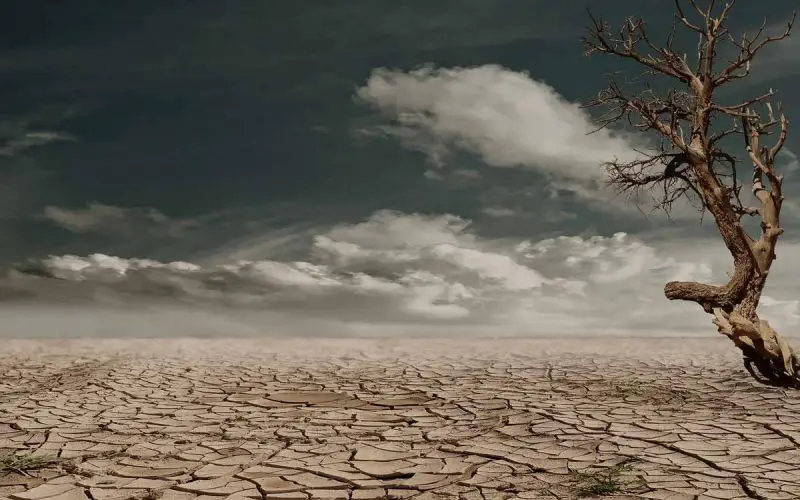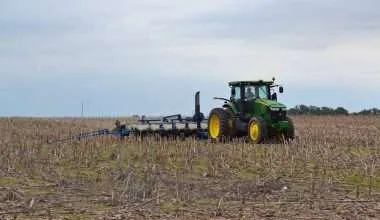Table of Contents Show
What is desertification?
Desertification, also called ‘desertization’ occurs through a combination of human and natural processes which causes a reduction in productivity of the dryland (a dry region).
In simplest of terms; desertification is defined as the loss of trees and shrubs, leaving the land barren.
Desertification has affected almost 36 million square km of land according to a report by the United Nations environment programme (UNEP).
Desertification is a huge international concern, Over 250 million lives are being affected by this. According to the United Nations Convention, almost 135 million people may be displaced due to desertification by 2045.
It is a source of massive land degradation in water-scarce parts of the planet. This can lead to temporary or permanent decline in productivity, soil, vegetation and wildlife.
Desertification is slowly entering our lives and has the potential to change everything.
This phenomena has led to the doom of many landscapes and civilizations. The Indus Valley civilization is one of its noticeable victims.
Destruction of tropical forests allowed huge area to be swept out by deserts during the Harrapan civilization.
What is the process of Desertification?
Although the end-product is similar, Desertification is nothing like the preexisting deserts of our planet which consist of diverse dryland ecosystems and countless species.
This is a destructive process where a fertile land filled with greenery and its own specific diverse wildlife converts into a barren land, which is similar to a desert.
P.S: There are actually 4 types of deserts; hot and dry deserts, semi-arid, cold and coastal deserts.
This makes it very difficult for plants to grow and the native species have to adapt to the new environment. This is termed as ‘habitat destruction‘ and very harmful for wildlife.
Trees and plants have the potential to store heat and water.
The water evaporates from the leaves through evapotranspiration and contributes to production of rain in these areas. Rain nourishes the area by providing water to wildlife and plants. This is termed as a water cycle.
Many actions, both human and naturally-occurring, may lead to loss of trees and shrubs.
The reduced amount of vegetation cover prevents storage of heat and moisture. This makes the surrounding air warm and reduces the soil’s shelter.
The shelter was saving the fertile arable land from erosion. Now the fertile topsoil layer gets eroded by water and wind erosion, making it difficult for new plants to grow.
If this process occurs in a semiarid or arid land near a desert, the existing desert may expand and convert this area into a newly formed desert permanently.
Once this process kicks in, it becomes very difficult to stop and reverse the effects of desertification.
What are the causes of Desertification?
Most of the desertification occurring is mostly due to human activities, however, natural events have also played a vital role in causing desertification.
Major causes of desertification are mentioned ahead.
1. Overgrazing

There has always been a very strong connection between desertification and overgrazing. It’s a directly-proportional relationship of sorts.
People living on the countryside practice livestock farming and for some, that livestock may be vital for survival.
Farmers usually practice livestock farming as an added means of income. They are just let loose on the rangeland.
These animals (cattle) constantly step on vegetation and feed on the productive land as a source of food. This prevents re-growth of plants and weakens their roots.
When the land loses its biological productivity, the soil surface may become prone to wind and water erosion. This makes way for barren lands.
Sadly, there are no strict regulations in place to prevent this process. This process constantly repeats itself as farmers find new arable lands to feed their livestock.
There have been several cases of overgrazing leading to desertification of world’s drylands.
It is said that 70% of once-fertile Mongolian steppe is now gradually being overtaken by the Gobi desert. Similar cases have been reported in Syria and other parts of the world.
2. Deforestation
Deforestation is one of the leading human causes of desertification.
Forests are being chopped down at an alarming rate, leading to massive desertification in various regions of the planet.
Trees and other forms of vegetation are vital in protecting the soil and evaporating water into the atmosphere to generate rain. They also prevent climatic variation.
Trees essentially prevent global warming and climate change.
Once these safeguards are removed, there is nothing to prevent soil erosion and loss of soil fertility, otherwise known as dryland degradation.
This will eventually form a barren degraded land.
The semi-arid land area loses its potential to stop the climate from becoming dry. The amount of precipitation also lessens as there are no plants available to provide water vapor to climate for rain. The water cycle breaks down.
Deforestation is now a common practice. It’s carried out on a massive scale to make space for agricultural lands.
This is to meet increasing population demands and to provide consumer forest products.
3. Agricultural techniques
Agriculture is a necessity carried out to meet the world’s food demand.
Poor farming techniques and unsustainable agricultural methods have sped up the process of desertification considerably.
Agricultural practices like monoculture farming have greatly damaged soil health.
Vegetation, which is the last line of protection for the fragile soil is also removed. This results in complete destruction of the fertile land in just a few years.
Irrigation has also contributed to this process. Irrigation leads to build up of salt in the soil and increases its salinity.
Salinity makes it difficult for crop growth to occur, further exacerbating soil degradation.
The Aral Sea can be taken as an example of improper planning and mismanagement by the Soviet Union in the 1960’s. The mismanagement led to 90% reduction in size of the Aral Sea and conversion of that land into a saline desert.
Agriculture should be carried out efficiently and by implementing sustainable land management techniques so the soil may not become a potential victim of desertification.
4. Poor Water management
Nature is constructed on a fixed cycle of water which occurs throughout the year in specific periods.
Dry and arid lands often face a stage of scarcity. It is during this time, the well-adapted dryland ecosystem takes measures to protect itself through this enduring period.
Plant may store water and enter dormancy to protect themselves. Once the season passes, these plants may grow back into brilliant greenery which can be grazed by wildlife.
However we may over-burden these areas by extracting excessive water from lands, creeks and rivers without giving sufficient time for land resource to replenish them.
Tourist destinations in semi-arid and arid regions of the planet have also been over exploited. A large amount of water is extracted from the ground for resort guests, leading to scarcity of water around.
The water is unable to replenish in sufficient time. This results in dryland areas converting into desert.
5. Overpopulation and Overuse of Natural Resources
The natural ecosystem of our planet works in fixed cycles set in stone. Although it has the ability to be adaptive under certain circumstances; the system is quite vulnerable when it comes to massive changes.
Excessive population growth is an issue which has greatly disturbed the natural life-cycle and state of our ecosystems.
The demand for resources has increased with population growth. More water is required as larger agricultural projects are carried out to meet food requirements.
The most critical arid areas susceptible to desertification are harmed the most. For some lands, excessive water extraction could be the final push over the edge.
This over-exploitation of the planet’s natural resources has led to formation of barren lands throughout the world.
The desertification in Africa, mainly sub-Saharan region, has has been attributed to high population and birth rate, lack of regulations in place and ability of the government to turn a blind eye on the region.
6. Tourism and Urbanization
To make way for big cities, skyscrapers, holiday spots and tourist attractions; ecosystems and natural resources in the form of forests need to be cleared out.
In turn, we start looking for natural resources in other forests. We then start extracting forest products from tropical rainforests in pristine conditions.
While doing this, we are potentially depleting that area of its resources and making it a target for desertification.
Space is also an issue.
Massive skyscrapers, housing and more commonly commercial projects are built on once fertile soil filled with massive agricultural potential. That land could have been used for agricultural practices.
Countries with hot climates such as Egypt, Turkey and Syria all have tourist spots along coastlines and riverbanks. This reduces the potential of those lands to be used for farming purposes.
This increases the likelihood of desertification in the process of tourism.
7. Climate Change
Climate change is a phenomenon which can exacerbate the process of desertification significantly.
A lot can be said about how it effects land degradation, but it’s very important for us to know how climate change causes desertification.
Among the climate change factors that influence desertification are changes in patterns of temperature, rainfall, sunlight and winds.
Following are some impacts of climate change on causing desertification:
- Soil properties and processes like organic matter decomposition, nutrient leaching and soil water systems will all change with increasing temperatures.
- Latin America’s farms in arid regions are expected to suffer from salinisation and desertification.
- Higher temperatures in Southern Europe will reduce water availability and increase drought frequency. This will also reduce hydropower potential and crop yields.
- Arid and Semi-arid regions of African countries will be hit the most. With reduced fertility, land productivity and limited growing seasons.
- Lower latitude regions with dry and tropical climate will experience decreasing crop yield with every 1°C increase in temperature.
Land degradation and rainfall are linked inversely. Their connection is what connects climate change and desertification.
As we constantly remove vegetation from land, we are halting the process of transpiration. Evaporation of water vapor (Transpiration) can’t occur as there is no storage of water.
Degraded lands do not have plants to store water in them, or even to preserve groundwater. Without evaporation, there’s no water to form clouds.
The area becomes devoid of potential rainfall and water, causing it to enter a state of drought. This can lead to drying of creeks, wildfires, reduced feed for livestock and poor pasture.
It is climate change which causes people to take drastic actions, further intensifying the destruction of ecosystems through desertification.
8. Political instability, poverty and famines
When a country is facing other integral issues like political instability, famines, poverty and drought; the government doesn’t have enough resources to consider sustainable methods and strategies to protect ecosystems.
These are economic issues, for which, the country focuses on driving profits.
To overcome these financial problems; intensive agriculture, deforestation, overgrazing of land and other invasive activities are practiced.
Unfortunately, this further increase the process of desertification and in no way helps to improve people’s lives.
Instead, these can put them at an even greater risk than before. For example, they may lose their homes to desertification.
9. Sand and Dust Storms
Dust storms have a number of effects which intensify desertification.
Dust storm destroy crops, nutrient-rich soils and organic matter through wind erosion. This reduces agricultural productivity of farmlands.
For example, a huge amount of Iraq’s farmlands have “blown” away at the hands of dust storms.
Dust storms bring shade over the land and conserve water only for a bit of time. More importantly, these dust storms increase land temperatures because of heat trapping.
Higher temperatures drive clouds away, resulting in less rainfall.
Increased dust storms are causes as well as effects of desertification. It would be fair to say they’re linked in a vicious cycle.
With increasing drylands, there has been 25% increase in annual dust emissions over the past century.
Increased deserts have allowed for a greater amount of loose sand to be available. Loose sand/dust can be picked by strong winds and form sandstorms.
These dust storms result in ailments like pneumonia, asthma and other allergic reactions.
What are the Effects of Desertification?

1. Damage to Vegetation
Agricultural lands are unable to support plant growth due to desertification. The soil loses fertility!
Reduced rainfall that does occur, most of it doesn’t get absorbed into the soil. Since there are no plant roots to absorb water, rain on barren land washes off remnants of the topsoil layer. This results in nutrient pollution.
Some might think increased rainfalls would help a barren area.
No. That just leads to more floods as the volume of run-off increases.
Overgrazing rather helps to speed up this process and further damages the vegetation.
2. Loss of fertile soil
The process of desertification completely removes the topmost layer of soil, also known as topsoil.
This layer is the most fertile layer of the soil. It contains important nutrients and minerals like phosphorus and nitrates that are necessary for plant growth.
Additionally, this layer of topsoil is best for absorbing water through rainfall. The land becomes dried and is unable to absorb water effectively due to loss of its topmost layer.
Poor unsustainable agricultural techniques make the soil more saline. This, coupled with improper irrigation methods, makes the soil lose its ability to produce high yield crops.
Eventually desertification turns this land into a non-living barren land.
3. Worsening Erosion
Erosion is not only an effect of desertification but acts as a catalyst for more desertification.
Absence of vegetation cover makes the soil highly susceptible to erosion. Rainfall makes it easier for soil nutrients to runoff when there are no crops to hold them!
This destroys adjacent fertile land, making it more likely to be converted into a desert. Weakened soil can be further blown away by winds, eliminating the last available fertile land.
Trees being chopped of for multiple reasons also exposed the soil to become eroded quickly. Soil erosion is one of the last steps which complete the process of desertification.
4. Vulnerability to Natural Disasters
Desertification compromises the ability of an area to withstand climatic variations and more importantly, natural disasters.
This is due to the fact that desertification damages the natural ecosystem’s resilience to withstand these weather changes.
No plants are available to stabilize the soil and preventing run-off, making it easier for the soil to run off through erosion and losing its fertility.
Deserts (or any forms of barren land) are vulnerable to flooding. Wet deserts have high levels of water and minimum plants to stop flowing water.
Flood water has the ability to pick up various pollutants while it moves through agricultural lands, urban areas, wastelands, vegetation. These pollutants can even be absorbed in adjacent soil, damaging them.
Sand storms are another issue, as many pollutants can travel long distances by wind and pollute various areas.
5. Water Pollution
Plants have various functions in an ecosystem. They especially act as water filters, reducing the number of pollutants in water.
These water pollutants may have adverse effects on the soil. Additionally, this may contaminate drinking water sources.
This makes water pollution one of the major desertification effects on humans! It may only be second to threatened food security (Effect#9).
In addition to acting as water filtration sites, they also reduce the amount of water running off to rivers and allow easy infiltration of water into the soil.
Barren soil lacks the ability to clean water which allows pollutants to enter groundwater reserves or surface-water reserves.
This run-off could make its way into your drinking water too!
So make sure to get the best eco-friendly water filters out there.
In addition, erosion creates the opportunity for soil to be taken up by water. This affects marine and aquatic ecosystems due to increased process of sedimentation and eutrophication.
6. Migrations
Desertification has led to mass migrations of humans and animals, especially due to loss of fertile lands.
Humans are always on the lookout for fertile lands to grow crops and have a sustained lifestyle.
However, as the land loses its fertility it becomes useless. It is unable to support crops and provide food for humans. This leads to humans migrating away from that area and forever abandoning it.
Farmers are mostly the ones affected by this. They are also responsible for this due to their unsustainable farming practices.
Desertification in Sahel region of Africa is mainly because of farmers. The sahel region of Sahara desert was overexploited by the farmers and eventually they had to bare the loss in productivity.
They had no other choice but to migrate from the region after that.
UNCCD (United Nations Convention to Combat Desertification) estimates that desertification could in the next ten years displace 50 million people.
Farmers will be most-affected by this displacement. Subsequently, they will look for new pastures.
They may also migrate to cities to find work. Since they don’t have necessary skills or education, they may have difficulty living a proper life.
Additionally, animals may also migrate to find food and may even become invasive species to new habitats!
7. Socio-Economic Effects
As desertification kicks in, the natural ecosystem becomes completely destroyed and unfavorable to support any form of life.
As the soil is no longer fertile, the land is unable to cultivate high yield crops. The limited fertile land doesn’t produce adequate amount of necessary crops, leading to famine in those regions.
Desertification of Africa (especially due to arid climates) has resulted in widespread famine.
Farmers are unable to cultivate crops as the land is barren, thus making it difficult for them to earn a living to support their families.
This forces them to go for other alternative ways to earn money. As we all know, nowadays this is already difficult to begin with, especially if you’re uneducated.
Lives of farmers and Bedouins (tribes that live in deserts) in Syria have been ruined. Syria is another example of desertification.
Unrestricted overgrazing has led to loss of vegetation. The soil was no longer fertile, which has left the country almost barren.
It is these reasons which triggered the ongoing civil war in the country.
8. Extinction of Species
Native species can only resist and survive minimal fluctuations in their habitats. When there are changes in weather patterns, the species do have the capacity to adapt and evolve according to changes.
However, if extreme changes take place in habitat and weather conditions, they are not able to adapt and therefore become at risk of extinction.
These changes are termed as ‘habitat degradation‘.
Desertification doesn’t give the opportunity for many species to adapt to the process.
Native species, living in their native comfortable environment, are introduced to a new environment which does not have trees, plants, vegetation and fertile soil for animals to live, eat and reproduce.
This is a very serious issue as many other plots are already in play to make species extinct, and desertification is also playing a strong role.
We need a diverse ecosystem to thrive and live properly. But if the world is swept up by deserts, we may no longer have resources to live properly on the planet earth.
9. Loss of Food Security
Global food security is threatened by population growth and loss of productive lands due to desertification.
Growing population needs more food. Loss of fertile lands to provide that food means increased world hunger and reduced food to go around for everyone.
Some countries now have to depend on other countries to fulfill their food demands. For example, Europe imports more than half of it’s food products from Brazil, United States and Norway.
Countries (and others in the world) which supply 60% of the world’s food demand, grow it in farms located in drylands.
These drylands are close to desertification. We will soon lose them if unsustainable farming practices are to continue.
Solutions to Desertification
1. Education
Any time you see us discussing solution, education and awareness are the two key aspects we talk about!
“If you are unable to understand the cause of a problem, it is impossible to solve it.”
Naoto Kan, Former Prime Minister of Japan.
And education is the pillar for people to understand desertification and its effects, especially in developing countries.
It will help farmers understand true benefits of sustainable farming methods and how to practice them. This will prevent farms in dry land areas from becoming deserts.
If they’re educated, its easy for them to understand why restoration of degraded lands is important.
The Food and Agricultural Organization started the FAO Drylands Restoration Initiative in 2012. It was aimed to raise knowledge, awareness and experience to prompt actions to reverse desertification.
In 2015, they collaborated with Turkey’s forestry departments and made global guidelines for restoring degraded forests and drylands.
Education will allow easy implementation of policies to reverse desertification. Public will comply when they know benefits of reversing desertification.
2. Laws and Incentives
Regions at high risk of desertification need to implement laws if they are serious about reversing the process.
A major example of such laws would be China’s Law of Prevention and Control of Desertification. It was introduced in 2002 and established a National Action Plan for China to combat desertification.
The law allows federal and local governments to keep check on activities that worsen land degradation. It allows incentives for farmers to encourage sustainable land management.
The law has proved itself by reversing the extreme trend of desertification in China over the past 15 years.
3. Reforestation
Reforestation is not only the treatment of desertification, it also defeats one of deforestation’s root causes; deforestation.
Look at it this way. Cutting down trees promotes desertification and re-growing them solves it.
NGOs focused on climate change and food security like FAO, concentrate their efforts on regions where deforestation and desertification are causing extreme poverty. Their efforts here involve education and employment in reforestation programs.
The ‘Green Wall of China’ is a major example of combating desertification in China. The project has been going on for 50 years and planted 66 billion trees in the great green wall.
It’s been so successful that it reduces almost 2000 square kilometres (km2) of desert land every year! Dust storms in the region have reduced by 20% due to the wind-breaking effect of green wall.
Similar green wall of Africa project was set up on borders of Sahara desert in 2007. The goal is to combat desertification which has deeply affected African countries.
The green wall of Africa stretches for 8000 km and has restored 36 million hectares of land! It has also created many job opportunities for all those living near the green corridor of Africa.
Reforestation and Afforestation is key to solve desertification crisis and achieve land degradation neutrality state.
4. Contour Trenching
Contour Trenching is a method implemented to reduce soil erosion by flowing water (due to rain or floods). It involves digging trenches 1 meter wide and 150 meters in length.
The angle of contour trenches matches the vertical angle of the cultivated land (could be on a hill). This is to make sure water does not flow within these trenches and stays level.
Stone walls are built to hold the trench walls from collapsing. These trenches prevent soil erosion and store water for a future drought day.
5. Restoring Soil Fertility
Enhancing lost soil fertility is achieved by growing nitrogen-fixing plants.
Best plant species that restore fertility include leguminous plants, Succulents and food-providing crops/trees like grains, barley, beans and even dates.
Leguminous plants are responsible for extracting nitrogen from the atmosphere and injecting it into the soil.
Some farmers may choose to use synthetic fertilizers, but they may do more harm than good.
6. Farmer-managed Natural Regeneration
Farmer-managed Natural Regeneration or FMNR is another sustainable land management technique which has been successful in desert reclamation.
The process involves breaking shrubs, roots or seeds from the previous tree to plant another. This way, farmers don’t have to buy new seeds and re-plant them after every harvest.
It allows for sustainable development with continuous supply of food products and timber, all the while building up climate resilience.
The only downside is manual labor. This won’t be a hurdle in poverty-stricken countries.
The simple and low-cost farming method regenerated 30,000 square kilometres of degraded lands in Niger, Africa!
7. Controlled Grazing
As we discussed how overgrazing is a major cause of desertification in dry sub humid areas, the logical choice would be to control cattle from grazing a single area of grassland.
Especially when grasslands are responsible for storing Carbon Dioxide.
A simple way to restore grasslands is to rotate cattle-grazing over different pieces of land every other day. This is similar to crop rotation.
Some believe, controlled grazing could increase carbon reserves of 3.5 billion hectares of grasslands to offset almost 12 years worth of CO2 emissions!





